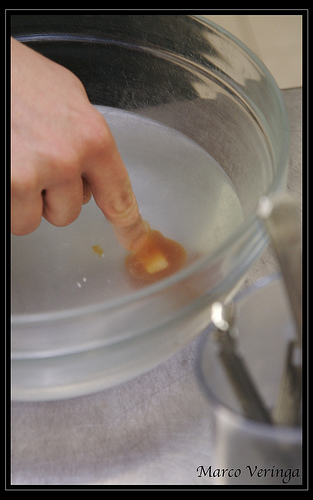Also an article in the book The Best American Science Writing 2007 is a piece called “Cooking for Eggheads” by Patricia Gadsby on molecular gastronomy, which is the study of the physical and chemical processes that go into cooking food.

It is interesting to think about this field of science and compare it to what nutritionists do. Nutritionists try to break food down into their essential parts and attempt to inject things where they do not naturally belong. Molecular gastronomists, on the other hand, are scientists who want to know what is happening to the molecular structures in food when they are cooked or otherwise manipulated.
Gadsby talks about how one person she interviewed, Hervé This (pronounced Tiss), demonstrated that the texture of cooked eggs is completely determined by the temperature, not the time, at which they are cooked. A few degrees make a difference because different proteins in the yolk and white coagulate at different temperatures in the range of 142-184˚F.
Hervé This makes the point that what molecular gastronomists are interested in is figuring out the mechanisms, but people who throw around the term molecular gastronomy to describe fancy cooking techniques essentially should not be considered representative of this field of science. Molecular gastronomists are more like the physicists who are looking to find the laws of the universe, just instead of the universe they are interested in the laws of food and cooking. But like nutritionism giving the false perception of understanding the composition of food, showy restaurant chefs are giving the public a misconstrued image of molecular gastronomy.
But there is a good side to everything, and exposing people to new techniques draws attention and recognition to the field. The tricky part is then to convince those people that there is a greater purpose to experimenting with food than to just have a cool trick to show. Molecular gastronomy brings us closer to understanding the complex nature of different types of food applied to heat and other external forces. By understanding these processes, we may get closer to finding out what makes food nutritious and how to maximize that nutritional value.
Image credit:
Flickr user Marco Veringa